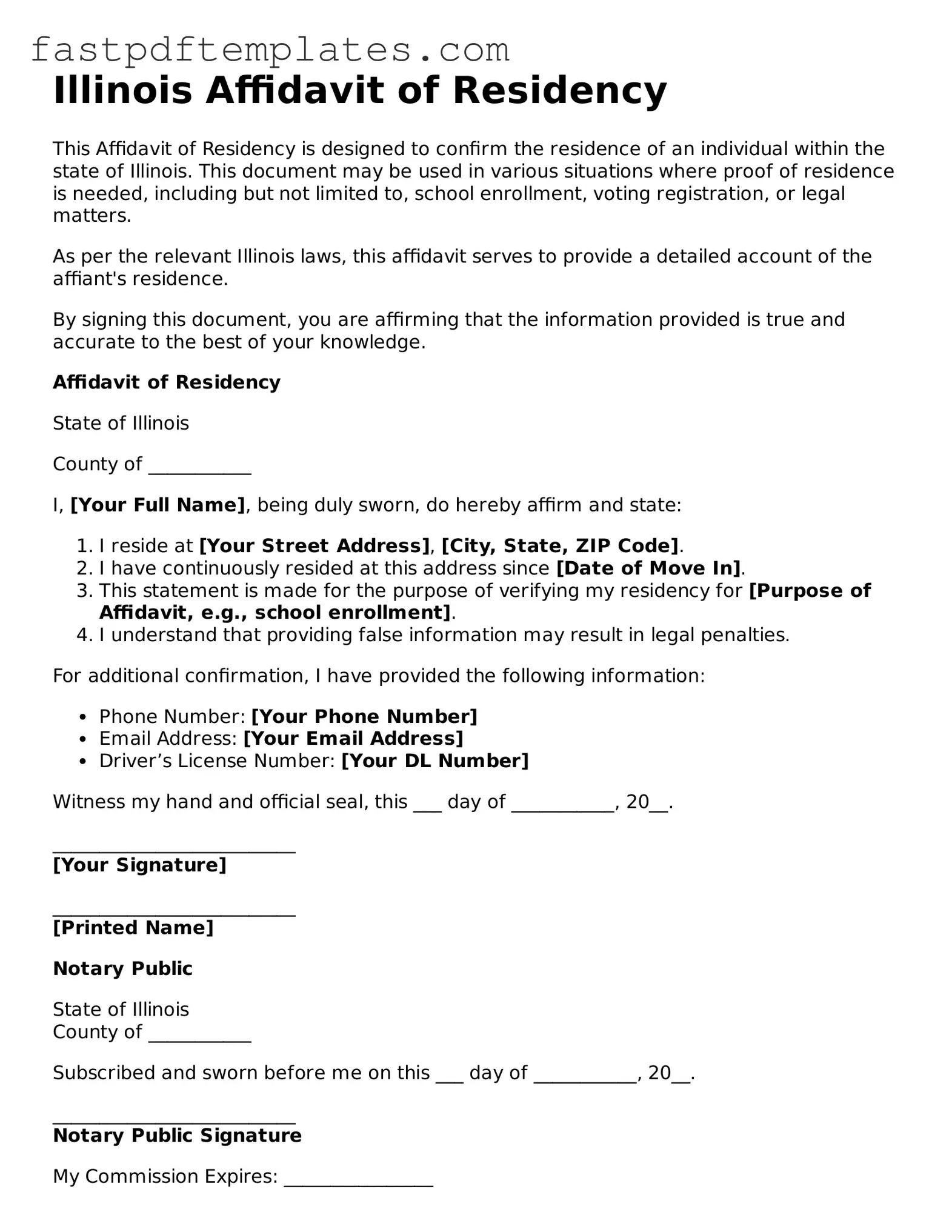Illinois Affidavit of Residency
This Affidavit of Residency is designed to confirm the residence of an individual within the state of Illinois. This document may be used in various situations where proof of residence is needed, including but not limited to, school enrollment, voting registration, or legal matters.
As per the relevant Illinois laws, this affidavit serves to provide a detailed account of the affiant's residence.
By signing this document, you are affirming that the information provided is true and accurate to the best of your knowledge.
Affidavit of Residency
State of Illinois
County of ___________
I, [Your Full Name], being duly sworn, do hereby affirm and state:
- I reside at [Your Street Address], [City, State, ZIP Code].
- I have continuously resided at this address since [Date of Move In].
- This statement is made for the purpose of verifying my residency for [Purpose of Affidavit, e.g., school enrollment].
- I understand that providing false information may result in legal penalties.
For additional confirmation, I have provided the following information:
- Phone Number: [Your Phone Number]
- Email Address: [Your Email Address]
- Driver’s License Number: [Your DL Number]
Witness my hand and official seal, this ___ day of ___________, 20__.
__________________________
[Your Signature]
__________________________
[Printed Name]
Notary Public
State of Illinois
County of ___________
Subscribed and sworn before me on this ___ day of ___________, 20__.
__________________________
Notary Public Signature
My Commission Expires: ________________
